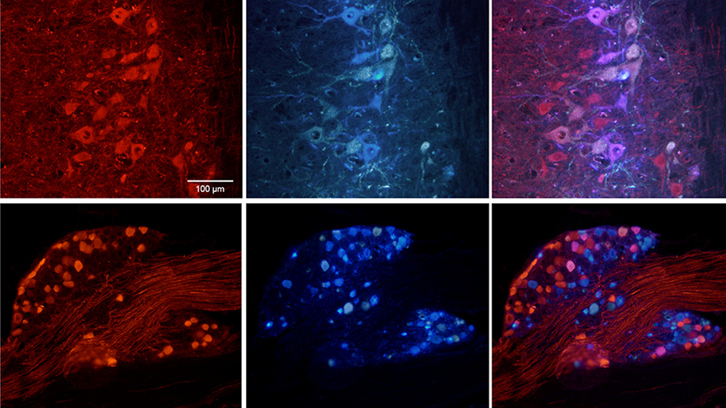Where do motor and sensory neurons regenerate after severe nerve injury?

After a severe nerve injury that disrupts the axons, neurons can regenerate, reinnervate their target organ and, therefore, recover their function. of the denervated organ. Researchers at the Institute of Neurosciences of the UAB have studied the regeneration preference of motor neurons, proprioceptive neurons and two population of sensory neurons in mice after this type of injury.
Peripheral nerves contain the axons of motor neurons that innervate our muscles (spinal motoneurons) and sensory neurons that innervate the skin or the muscle. There are many types of sensory neurons, including touch, pain, temperature, and proprioceptive neurons, the latter including those that sense muscle position.
After a nerve injury, axons can break. This triggers a degeneration of the distal segment of the nerve, whereas neurons and the proximal segment of the axons usually survive. In these neurons, there is a change in gene expression that allows them to switch to a pro-regenerative state that enables axon regeneration through the distal segment of the nerve. If regeneration is successful, axons will grow to their target organs, reinnervate them and recover their function.
However, severe nerve injuries usually lack a good functional recovery. One of the reasons is the lack of specificity or erroneous reinnervation: many regenerating axons cannot find the correct pathway toward their target organs and fail to reinnervate them. Previous studies demonstrated that motor axons have a preference to regenerate toward the muscle branch of a nerve (the correct branch), although this preference is small. Contrarily, only a few studies have evaluated the preference of sensory neurons. Since sensory neurons are highly heterogeneous, it is important to independently study the different subpopulations.
Using transgenic mice that have fluorescence in specific neuron populations, we studied the preference toward the muscle or cutaneous branch of a nerve in motoneurons, proprioceptors, and a population of mechanoreceptors that include touch and pain neurons. We observed that, after one week, all neurons prefer the cutaneous branch. Nevertheless, after two months the preference is toward their correct branch: motoneurons and proprioceptors prefer the muscle branch, whereas mechanoreceptors prefer the cutaneous branch. This preference is below 60% and, thus, very limited in terms of biological relevance.
However, the existence of this mechanism suggests that neurons have specific regenerative responses and opens the possibility of modulating them to facilitate regeneration through the correct branch. This will help us design new strategies that increase specific reinnervation and, thus, improve functional recovery.
Institute of Neurosciences, Department Cell Biology, Physiology and Immunology, Physiology Unit, Faculty of Medicine. Universitat Autònoma de Barcelona
Centro de Investigación Biomédica en Red sobre Enfermedades Neurodegenerativas (CIBERNED).
References
Bolívar S, Udina E. Preferential regeneration and collateral dynamics of motor and sensory neurons after nerve injury in mice. Exp Neurol. 2022 Dec;358:114227. doi: 10.1016/j.expneurol.2022.114227. Epub 2022 Sep 13. PMID: 36108714.


